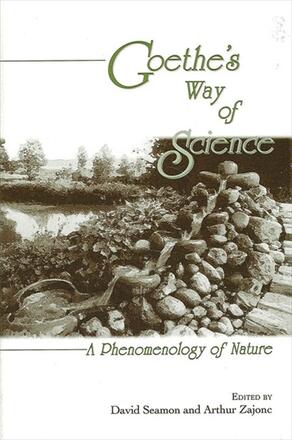
Goethe's Way of Science
A Phenomenology of Nature
Alternative formats available from:
Examines Goethe's neglected but sizable body of scientific work, considers the philosophical foundations of his approach, and applies his method to the real world of nature.
Description
Though best known for his superlative poetry and plays, Johann Wolfgang von Goethe (1749-1832) also produced a sizable body of scientific work that focused on such diverse topics as plants, color, clouds, weather, and geology. Goethe's way of science is highly unusual because it seeks to draw together the intuitive awareness of art with the rigorous observation and thinking of science. Written by major scholars and practitioners of Goethean science today, this book considers the philosophical foundations of Goethe's approach and applies the method to the real world of nature, including studies of plants, animals, and the movement of water.
Part I discusses the philosophical foundations of the approach and clarifies its epistemology and methodology; Part II applies the method to the real world of nature; and Part III examines the future of Goethean science and emphasizes its great value for better understanding and caring for the natural environment.
David Seamon is Professor of Architecture at Kansas State University. He is the editor of several books, including most recently Dwelling, Seeing, and Designing (SUNY Press) and Dwelling, Place, and Environment, and is the author of A Geography of the Lifeworld. Arthur Zajonc is Professor of Physics at Amherst College and has lectured widely on quantum physics. He is the author of Catching the Light: The Entwined History of Light and Mind and coauthor, with George Greenstein, of The Quantum Challenge: Modern Research on the Foundations of Quantum Mechanics.
Reviews
"…this volume does give some exciting glimpses of what a qualitative science might be like … As an introduction to 'Goethe's way of science,' this book serves wonderfully well … Goethe could hardly have wished for more. " — Worldviews
"I especially like the fact that a major portion of this book is devoted to presenting the results of Goethean Science research. This sets the book apart from all others that have appeared in English. These few books have been heavy on theory and light on results. The integration of theory with practice makes this an important contribution. " — Bruce K. Kirchoff, Department of Biology, University of North Carolina, Greensboro
"Goethe's Way of Science is a readable, highly original contribution to the study of environment. While challenging common paradigms of positivist, scientific methodology, the book does so unpretentiously, carefully and with much rigor. The range of examples provided by the authors is particularly illumining of the Goethean phenomenology of nature. I recommend this book to ecologists, scientists, philosophers, and students of nature as a thoughtful exploration of alternative ways of seeing the world and its living forms. " — Ingrid Leman Stefanovic, Department of Philosophy, University of Toronto
"This collection is a dazzling display of what can be done with Goethe's science when applied by competent scholars and researchers. The interplay of approaches (from the philosophical to the poetic, from the biological to the artistic) demonstrates how modern science can find a way out of the Gordian knot it has gotten itself into. " — Douglas E. Miller, Department of Foreign Languages, University of Michigan, Flint